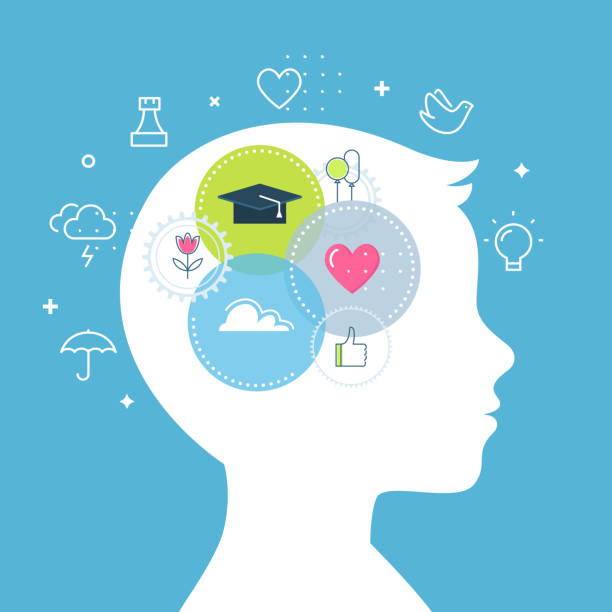Health - Importance Of Mental Health In Highschool Students
Our emotional, psychological, and social well-being are part of our mental health. It has an impact on the way we think, feel, and act. It also influences how we deal with stress, interact with people, and make decisions. Mental health is crucial at all stages of life, including childhood, adolescence, and adulthood.
If you have mental health difficulties, your thinking, mood, and behavior may be affected throughout your life. A variety of reasons cause mental health issues.
Before we begin, I'd want to emphasize that mental health awareness is vital for everyone; but, as a student, it directly impacts academic achievement, as well as energy levels, focus, reliability, mental capacity, and optimism, causing performance to suffer.
Early Warning Signs
Not sure if you or someone you know suffers from mental illness? One or more of the feelings or actions listed below might be an early warning indication of a problem:
- Having recurring ideas and recollections that you can't shake, Hearing voices, or believing things that aren't true
- Having significant mood swings that cause relationship troubles
- Family and friends yelling or fighting
- Feeling abnormally perplexed, forgetful, agitated, furious, disturbed, frightened, or afraid
- More than regular smoking, drinking, or drug use
- eeling despondent or helpless
- Experiencing unexplainable aches and pains
- Feeling numb or as though nothing is important
- Lacking or having no energy
- Pulling away from people and usual activities by eating or sleeping too much or too little
Raising Awareness About Mental Health
Teachers and administrators may seek to raise awareness with their kids until mental health education becomes an obligatory part of all schools. The notion of self-care and responsibility for one's mental health and well-being, emphasizing the fact that mental health is an intrinsic aspect of health and the concept of recovery from mental illness, are essential factors to highlight.
Teachers and students should be taught how to spot the indicators of growing mental health issues, and chances should be offered for learning about and managing mental health emergencies, such as the danger of suicide or self-harm. In addition, education should cover the link between mental health, substance misuse, and other harmful coping practices and the detrimental influence of stigma and societal attitudes about mental illness.
Because teenagers spend most of their time at school, mental health awareness and education should be included in the curriculum. Students will be able to seek the aid they require if we empower them with knowledge and promote conversation.
Challenges Related To Mental Health
Limited Capacity
The capacity to handle mental health concerns is limited. Historically, schools have utilized their resources to hire a large number of student support personnel. Comprehensive school-based programs have been established and executed around the core of these school staff personnel. School counselors—who represent the majority of student support professionals in schools—have seen their responsibilities shift away from the overall personal, social, emotional, academic, and career development of each student toward an academic achievement-only focus as a result of increased accountability for academic results under the Elementaryand Secondary Education Act (ESEA) and subsequent regulations, creating a rapidly widening gap in support services.
Disinvestment In School-based Mental Health Programs
While the Individuals with Disabilities Education Act (IDEA) and the Elementary and Secondary Education Act (ESEA) both include programs and initiatives to address comprehensive support services in schools, funding for these programs, including the Safe and Drug-Free Schools and Communities Act (SDFSCA) State and Local Grants Program, has been drastically reduced, if not wholly eliminated, since FY 2009. This comes at a time when student enrollments are rising, and services for social-emotional wellbeing and mental health are in high demand. In FY 2009, federal initiatives supporting students' mental health and wellness totaled more than $800 million; however, Congress only allocated $400 million to Title IV and the SSAE grant program in FY 2017.
Stigma Attached To Mental Illness
Mental illness has long been stigmatized in our culture due to tragic historical and cultural factors. Bias, suspicion, stereotyping, fear, humiliation, rage, and avoidance are symptoms of this stigma. Psychosocial and mental health issues in schools are often not given top emphasis unless a high-profile event happens, such as a campus shooting, a student suicide, or an increase in bullying. Furthermore, initiatives to address school-based mental health services continue to be haphazard, incomplete and highly neglected.
People Also Ask
What Causes Teenage Mental Illness?
Environmental factors of mental illness in teenagers are frequently a result of stress. Social stress, solitude, and substance misuse are all familiar sources of stress in adolescence. Trauma - mental, sexual, or physical abuse is another typical source of stress.
What Are 5 Benefits Of Having Good Mental Health?
Here are the benefits of having good mental health:
- Relationships have improved.
- Depression risk is reduced.
- Self-esteem has improved.
- A stronger sense of inner serenity or tranquility.
- Think more clearly.
- Moods improved.
- Anxiety is lessened.
Why Mental Health Is Important For Leading A Happy Life?
A happy existence necessitates good mental health. Embracing our emotional, psychological, and social well-being has an impact on how we feel, think, and live our lives. Of course, prioritizing mental wellness is crucial. Suicide is the second most significant cause of mortality in the 10-34 age group.
Conclusion
As a parent or teacher, it's critical to be aware of what's going on with your child, both behaviorally and emotionally. Everyone is different and is impacted differently by stress, life events, and emotions, but given the high frequency of mental illness in adolescents and teens, it is essential to acknowledge the mental health of high school students.


